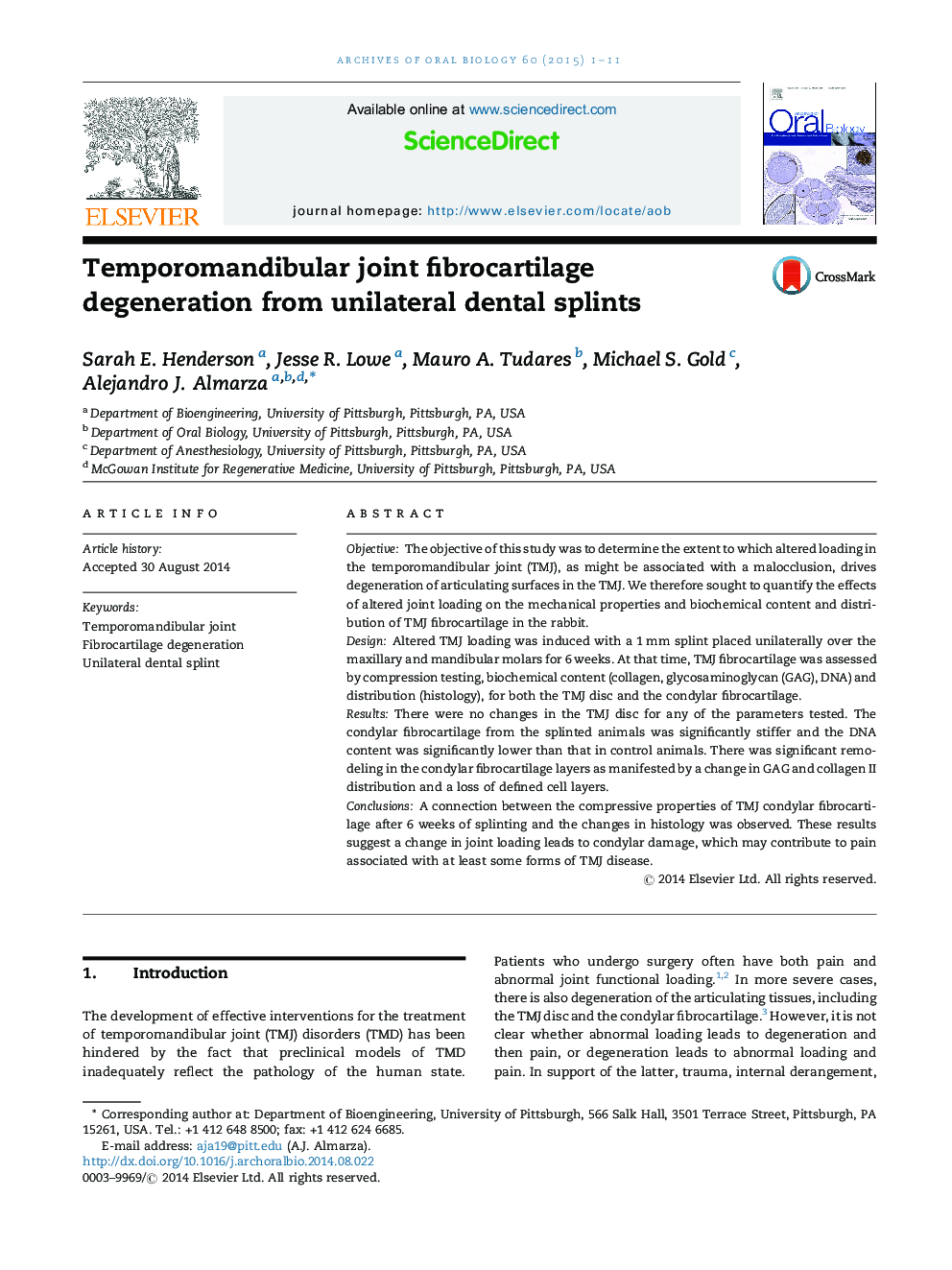| کد مقاله | کد نشریه | سال انتشار | مقاله انگلیسی | نسخه تمام متن |
|---|---|---|---|---|
| 3120866 | 1583304 | 2015 | 11 صفحه PDF | دانلود رایگان |
• Splinted rabbit condylar fibrocartilage was significantly stiffer than control.
• Splinted rabbit condylar fibrocartilage had significantly less DNA content.
• Loss of condylar fibrocartilage layers observed in histology.
• The change in joint loading led to condylar damage without observable disc damage.
• Unilateral splint placement can drive uneven condylar fibrocartilage degeneration.
ObjectiveThe objective of this study was to determine the extent to which altered loading in the temporomandibular joint (TMJ), as might be associated with a malocclusion, drives degeneration of articulating surfaces in the TMJ. We therefore sought to quantify the effects of altered joint loading on the mechanical properties and biochemical content and distribution of TMJ fibrocartilage in the rabbit.DesignAltered TMJ loading was induced with a 1 mm splint placed unilaterally over the maxillary and mandibular molars for 6 weeks. At that time, TMJ fibrocartilage was assessed by compression testing, biochemical content (collagen, glycosaminoglycan (GAG), DNA) and distribution (histology), for both the TMJ disc and the condylar fibrocartilage.ResultsThere were no changes in the TMJ disc for any of the parameters tested. The condylar fibrocartilage from the splinted animals was significantly stiffer and the DNA content was significantly lower than that in control animals. There was significant remodeling in the condylar fibrocartilage layers as manifested by a change in GAG and collagen II distribution and a loss of defined cell layers.ConclusionsA connection between the compressive properties of TMJ condylar fibrocartilage after 6 weeks of splinting and the changes in histology was observed. These results suggest a change in joint loading leads to condylar damage, which may contribute to pain associated with at least some forms of TMJ disease.
Journal: Archives of Oral Biology - Volume 60, Issue 1, January 2015, Pages 1–11
